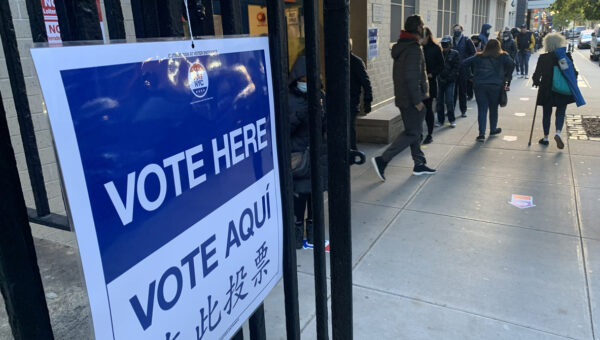
Bracing for Impact: How Nonprofits Can Prepare for an Uncertain Future

Written by Jeanne Mullgrav, Executive Vice President
The President’s tax policies represent a fundamental shift in the social services paradigm in this country, potentially eliminating government funding for safety net programs and requiring already fragile organizations to rely entirely on private funding. This $1.5 trillion tax cut package over the next ten years will mean that financial resources for social services are simply not available. Additionally, the reduction in tax incentives to make charitable contributions are projected to reduce private donations to nonprofits by up to $20 billion per year.
These policies will have consequences at the state level, where Albany is already facing at least a $4.4 billion budget deficit and the State Comptroller has announced that state tax receipts are lower than projected. According to the Governor, cuts in President Trump’s proposed Fiscal Year 2018 budget would reduce the State’s federal grants by anywhere from $2.6 billion to $17 billion, with the bulk of those cuts going to support services and critical programs for the City’s most vulnerable populations. As a result, the State will need to consider how it raises revenue and recoups unspent money, and whether it institutes across the board cuts or utilizes a targeted and strategic approach to cuts.
The City will see funding for social services slashed due to cuts at both federal and state budgets. New York City Comptroller Scott Stringer’s analysis of the Trump tax plan cites concerns over the City’s social safety net potentially shrinking, and the President’s ‘skinny budget’ would implement a cut of at least $400 million to City programs.
What can nonprofits do to navigate this changing landscape? Many organizations have already beefed up their engagement and advocacy efforts, but much more remains to be done. In this political climate, it becomes imperative for nonprofit organizations to provide additional services to those most affected by the cuts, especially as demand for such services increases. Providers should be able to launch effective advocacy campaigns at the state and local levels, build diverse and strategic coalitions, and leverage technology to respond to policy threats.
Here are four things your organization could consider to navigate the changing landscape and maximize your impact:
1. Appoint a Chief Advocacy Officer — and give them a budget
Nonprofits frequently engage their constituencies to respond quickly and loudly to changes in policy – this could be the job of your Chief Advocacy Officer. Continue to be proactive by allocating a budget for this work, because without it, it will be difficult to stand out in a crowded field of nonprofits.
2. Build coalitions, but do it STRATEGICALLY
Building alliances and coalitions has always been a key tactic of nonprofits. However, with the tremendous scale of cuts that are looming, there will be winners and losers. Nonprofits should consider aligning themselves carefully with groups and organizations that will withstand those cuts.
These coalitions will need to effectively advocate at both the City and State levels – where many of the decisions around how to distribute the cuts will be made.
Look at what the tech sector has done around immigration reform: Fwd.us was founded by prominent tech leaders to oppose restrictive immigration policies. Their diverse coalition continues to grow in response to the President’s proposed policies.
3. Prioritize AGILITY: Ensure you have the digital tools that enable your organization to respond quickly
Policy is increasingly revealed with little lead-time or warning—and often via social media. Just look at President Trump’s Twitter feed. As a result, organizations must be nimble: clean up your social media, update your databases, prepare draft petitions and letters, and modernize your technology.
Someone on your team should be dedicated to your digital organizing, looking for innovative ways that companies are reaching their targets. Because social media and advocacy are now completely interlinked, Capalino expanded its Digital Strategy Services to complement your organization’s political, community and legislative strategies.
Don’t forget: to justify this expense to your Board, you will need a system to keep track of your efforts. This could include a list of relevant contacts and meeting attendees, copies of letters issued, a list of obtained signatures, and other pertinent materials.
4. Engage the Media: consistently create and distribute content
Media is playing a critical role in the policy arena, and nonprofits are compelled to be savvy when it comes to inserting themselves in these discussions. In today’s world, if you didn’t get press for your event or program, it might as well not have happened. If no one is aware of your work, you may lose out on donors, clients, and government investment.
Consider the cadence of your communications and set goals – for example, issuing one press release and one blog post every week, putting out a podcast twice a month, and posting on social media multiple times a day.
At least one staff person, often a Chief Information Officer, should be dedicated to building relationships with the media. The press need you more than you need them: you just need to reach out.
Conclusion
In this time of budget cuts and political uncertainty, it is increasingly important for nonprofits to be extremely strategic and thoughtful in their operations in order to maximize their impact. We have seen the power of nonprofits to create a real and lasting change in our City, and know that success is possible.
Get The Latest From Capalino! Sign up for our free weekly newsletter for a roundup of top news and appointments from New York City and State government straight to your inbox every Friday. Click here to subscribe to Affairs+Appointments.



